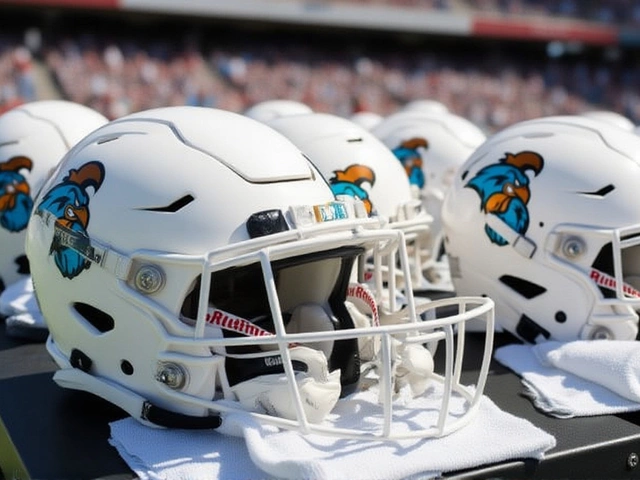The Initial Endeavor: The Use of Technology in Classrooms
I recall a time, harking back to the late '80s, when the thought of personal computers swarming the educational landscape was no more than a wild sci-fi dream. Now, a world without digital education tools feels like an ancient relic, a mythical land we tell tales about to the young ones. But when did technology worm its way into the educational system start? That's what we're uncovering today.
Funnily enough, the idea of using technology in the classroom started way earlier than you might think. We’re talking 1920s, when teaching machines and television sets became a part of the educational setup. This new revelation (it seemed new to me at least!) impressed me to the point where I almost tumbled off my ergonomic desk chair.
Why the slip? The 1920s were the roaring years! Jazz, flappers, Parisian literary salons, and apparently, teaching machines? Yes, it was a dingy-looking box that promised to revolutionize classroom learning – your antique version of a modern tablet, friends! Though 'teaching machines' were primitive and not very efficient, educators recognized their potential to shake up the traditional chalk-and-talk method, one chalk-dusty step at a time. Education itself, emboldened with technology’s nudge, started to redefine its boundaries and the way it impacted our impressionable young minds.
The Digital Tidal Wave: The '80s and '90s Revolution
Fast forward a few decades to the '80s and '90s, a time I remember fondly, especially as I was at the receiving end of these tech breakthroughs. Ah, the sweet scent of dot matrix printers and the cathode-ray-tube warmth of Apple IIe computers. These were the weapons of choice for the teachers of my cohort, elevating the learning experience like never before.
Perhaps, you wonder what it was like. Back in those days when you heard the word "Apple", you might have thought of the fruit or the Beatles’ record company. Here's a playful reminder, Apple Inc. was not what it is today. But in the '80s and '90s, this technology giant, along with IBM and later Microsoft, started understanding and exploiting the potential of technology in classrooms at a frightening pace. Apple II and desktop PCs gradually began popping up in schools across the globe, causing a seismic shift in the educational landscape.
The game was definitely on and the effects were visceral. Can you imagine the spark in students' eyes when they saw a computer in the classroom for the first time? There were interactive learning games which I swam through with much glee, certain software programs which drove the point home faster than pages of written text could ever do.
Brave New World: The Internet and the World Wide Web
Just as we were getting cozy with our personal computers, along came the Internet, and boy, did it shake things up! To give you an idea of the sheer magnitude of the Internet's influence, let's take an express elevator to the mid-'90s. This was when schools began to get serious with technology, building computer labs, defining curriculums around tech competency, and oh boy, the Internet! I mean, can we even imagine education today without it?
The Internet aggregated, accelerated and augmented the role of technology in the classroom. With the click of a button, classrooms were now connected to every part of the world. We were no longer limited by our physical textbooks. Remember those encyclopedia CDs we used to get? They became a thing of the past too. Everything was available online, and this global library was continuously updated by the second. It was surreal!
We went from simply relying on the teacher's knowledge to having access to a wide range of resources, view points, and materials which expanded our learning horizon exponentially. Classrooms became more collaborative with group projects and presentations, prepping us for the real world more than any textbook could.
The Future is HERE: AI, VR, and beyond
We've seen technology transform education, but what's the next step? My money is on holographic technology. Hey, if we can have concerts with holographic pop stars, why not holographic professors and classrooms, right? Allow me to explain.
What's most remarkable about technology - its ability to rapidly adapt and evolve, hasn't left the educational sector unscathed, especially with the advent of Artificial Intelligence (AI) and Virtual Reality (VR). You might have noticed I've hopped, skipped and jumped towards the very apex of our timeline. Well, it's worth it because what we're witnessing currently is monumental.
Imagine a future where students can have personalized lessons tailored specifically to their learning speed, clearly indicating their strengths and gaps in understanding with precise metrics. Picture VR being used to help students dissect a digital representation of the human body, interacting with the content rather than learning about it in the abstract. Sounds like fiction? No. Welcome to the present.
The goal of technology in the classroom isn't to completely replace traditional methods, but to augment it and enrich students' learning experience. It’s an inevitable evolution, and the strides we've made in just a few decades give me goosebumps. And if history serves right, we should be in for an exhilarating ride in the years to come.






